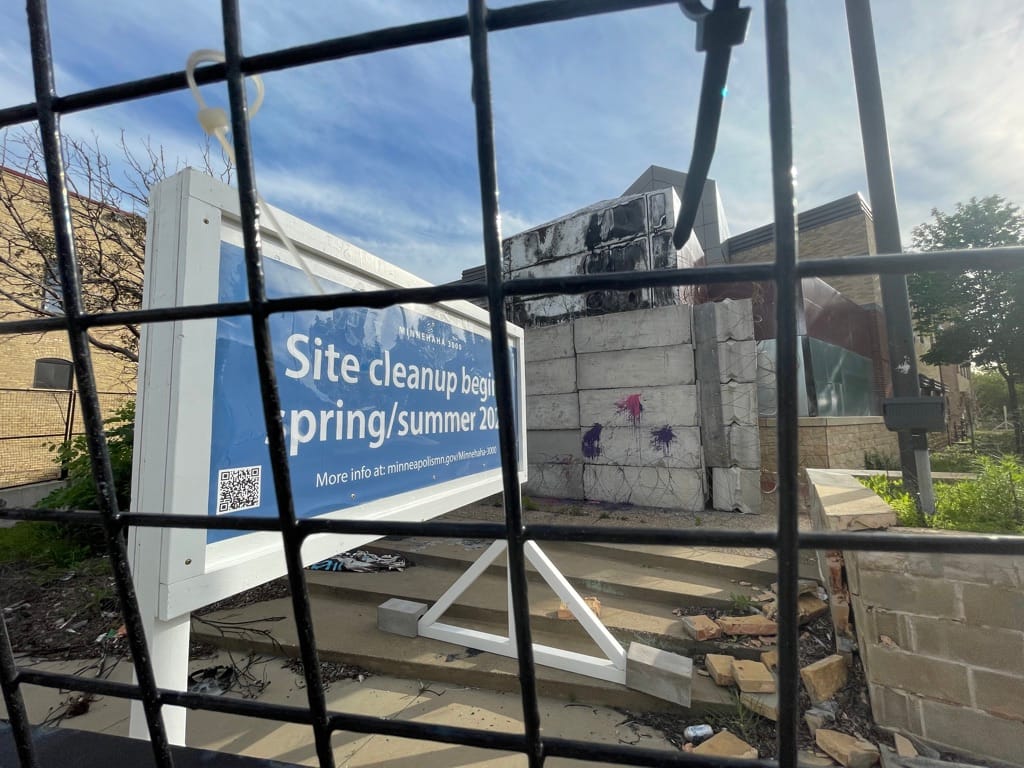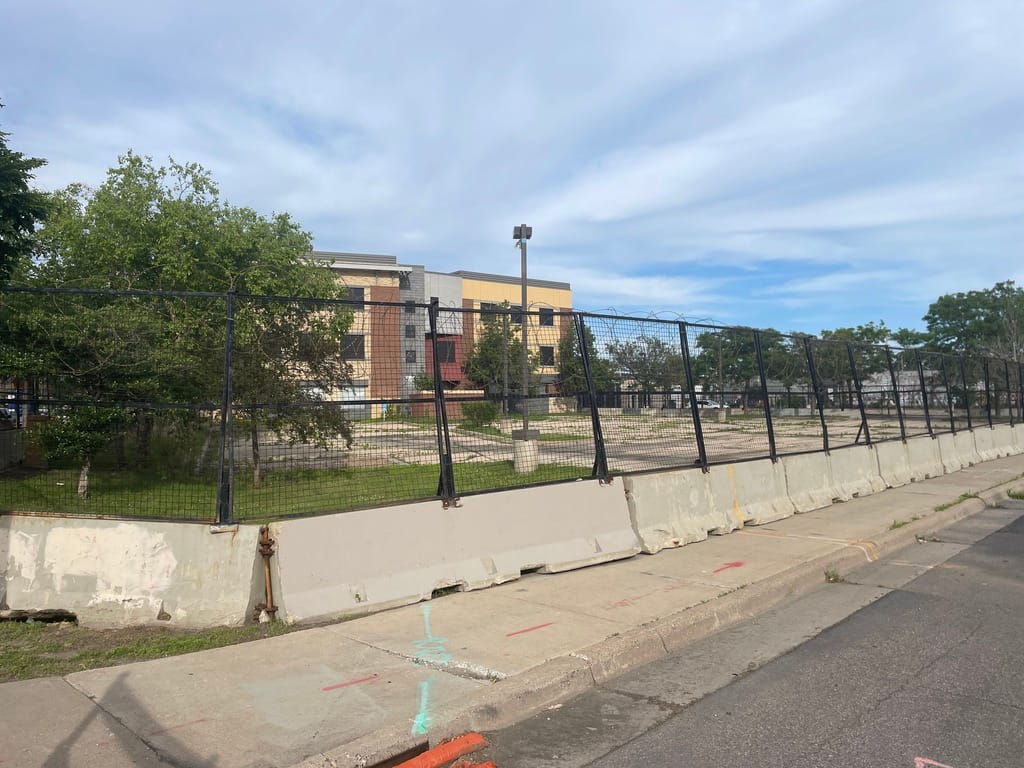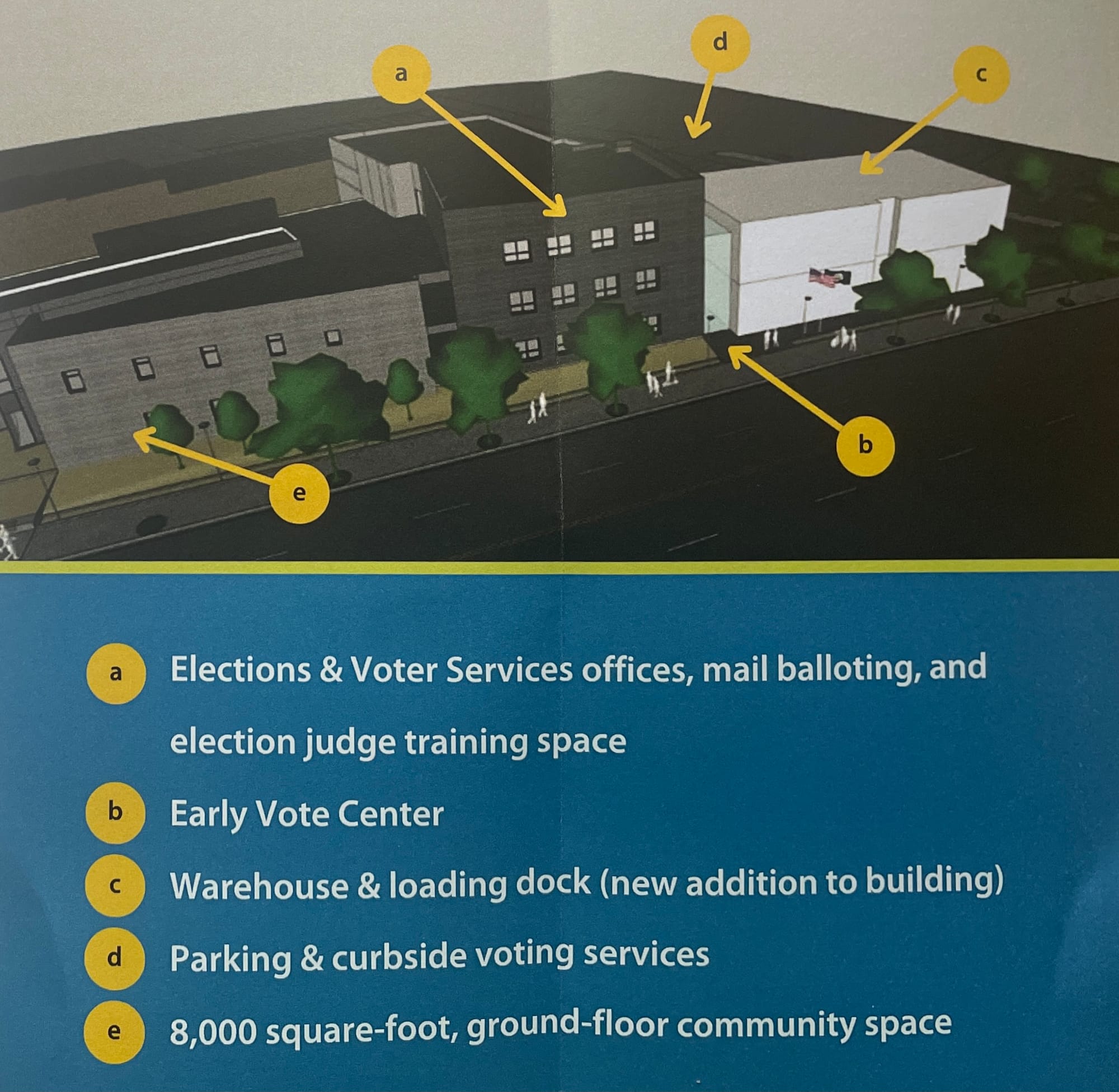🏚 Cleanup has (slowly) begun at the former Third Precinct
The fences, barbed wire, and concrete barricades should come down later this summer.

Note: This story is free for everyone. For access to everything else, become a subscriber.
Work is underway to get the former MPD Third Precinct building secured enough to remove the fencing, barbed wire, and concrete barricades that have ominously surrounded the building since it was partially burned more than four years ago.
Workers are already inside the building fixing the electrical systems and elevators, and the city is waiting on an order of doors and windows to be fabricated. Once these are installed, the melted front vestibule is replaced, and the building is deemed "securable," the barricades and fencing will be removed. Property Services Director Barbara O’Brien wouldn't give an exact date for the fencing to come down but said she expects it to be gone by the end of the summer, barring any delays in fabricating the doors and windows.
Once the fences are removed, the building will receive close monitoring while awaiting renovation into its still-unclear future use.

Future of the building
The $1.5 million cleanup will happen regardless of what the city decides to do with the building. Currently, they're proposing to turn the building into a "Democracy Center" that will serve as their new voting center headquarters and a community space of some yet-undetermined variety.
The city says moving the voter services headquarters to a city-owned building would save almost $400,000 a year that they're paying on a leased building in Northeast. They also say the site at Lake and Minnehaha should increase voter participation in a low-turnout area of the city, given its accessibility by car, transit, bike, and foot. As proposed, it would include:
- Early voting center: Election law requires the city to operate an early voting center for 46 days leading up to an election, in addition to pop-up early voting sites elsewhere around the city. The center would also provide a place for hopefuls to file for their candidacy.
- Warehouse for voting equipment: A new warehouse would be built on part of the parking lot along Lake Street, housing the city’s voting machines and equipment, and providing space to test and repair the machines leading up to elections.
- Offices: Workspace for the 16 year-round staff and hundreds of other seasonal workers employed around election time would be housed on the second floor.
- Community space: 8,000 square feet of space is reserved for a yet-undetermined community use. (For scale, that’s about the size of the first-floor area of the neighboring Hook and Ladder Theater building.) The community space would occupy the ground floor area that fronts Minnehaha Avenue, and would have its own entrance and bathrooms. Election staff say that additional space could be available for public use during election offseasons.
- Backup space: The current election services space has served as a backup for more urgent uses, like vaccines during COVID or housing 311 services displaced by the civil unrest.

After voting last year to prevent rebuilding a police precinct on the site, the city council considered the voter services center proposal in April. On a hotly debated 7-6 vote, the council declined to approve it and instead directed the city to solicit more public input. Councilmember Jason Chavez, whose 9th Ward includes the northwest quarter of Longfellow and the property in question, explained after voting against approving the plan that it “was meant to be a unifying proposal even though the city council was not asked to help shape it and in fact were told repeatedly that we had no say. There has also been no community engagement to help define the current plan.”
Other proposed plans have included a community center, homeless shelter, or museum. Frederick Brathwaite of Mama Sheila’s Restaurant has generated some press and early support for his vision for a sprawling Black Cultural Center. A group of neighbors known as Confluence Studio has issued its own "Autonomous Request for Proposals" to generate ideas for the site, and will present the top ideas in August.
Input
If the city’s voter center plan carries, the next big question would be what to do with the 8,000 square feet of community space. The city hosted an open house to kick off answering that question last night, and opened up a public survey to solicit ideas.
They've also contracted with the diversity-equity-inclusion-focused Good Works Consulting to lead a series of small-group input sessions. Results from both will be shared at an open house in September.